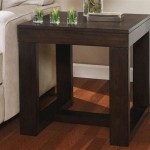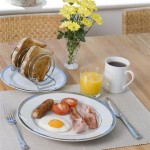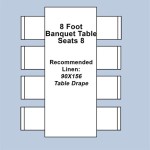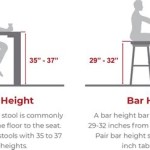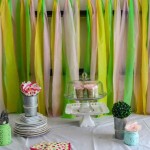Folding Table Hinged to Wall: A Comprehensive Guide
A folding table hinged to the wall represents a practical and space-saving solution for environments where maximizing available area is paramount. This design allows a table surface to be readily available when needed and then neatly stowed away against the wall when not in use. Applications range from small apartments and studio spaces to workshops, laundry rooms, and even outdoor areas. This article will explore the various aspects of wall-mounted folding tables, including their benefits, construction considerations, installation procedures, and selection criteria.
Advantages of Wall-Mounted Folding Tables
The primary advantage of a folding table hinged to the wall is its space-saving design. In compact living environments, a traditional table can occupy valuable floor space even when not actively in use. A wall-mounted folding table only takes up wall space when folded away, freeing up the floor area for other purposes. This adaptability is particularly beneficial in multi-functional rooms where the layout needs to be easily reconfigured.
Another key benefit is versatility. Folding tables can serve diverse purposes, from dining and working surfaces to craft stations and temporary storage areas. The ability to quickly deploy and stow the table allows for seamless transitions between different activities within the same space. For instance, a folding table in a home office can be used as a workspace during the day and folded away in the evening to create room for exercise or relaxation.
Furthermore, wall-mounted folding tables can contribute to a cleaner and more organized aesthetic. By eliminating the visual clutter of a perpetually present table, the space appears more open and less congested. This can be particularly advantageous in minimalist design schemes where simplicity and functionality are prioritized.
Finally, they can be a cost-effective solution. Compared to purchasing larger, permanent tables, a folding table can fulfill similar needs at a lower price point, especially considering the space savings it provides which may prevent the need for a larger dwelling.
Construction and Design Considerations
The construction of a folding table hinged to the wall involves several crucial elements that determine its stability, durability, and overall functionality. The table surface itself is typically made of wood, particleboard, MDF (medium-density fiberboard), or metal. Solid wood offers the greatest strength and aesthetic appeal but can be more expensive. Particleboard and MDF are more affordable alternatives but may be less resistant to moisture and heavy loads. Metal table surfaces are often used in industrial or workshop settings due to their durability and resistance to damage.
The hinges are a critical component of the folding mechanism. Heavy-duty hinges, capable of withstanding repeated use and supporting the weight of the table and its contents, are essential. Common types include butt hinges, piano hinges (also known as continuous hinges), and specialized folding table hinges. The choice of hinge depends on the desired level of support, the weight capacity required, and the aesthetic preferences of the user.
Support brackets are necessary to provide stability when the table is in the open position. These brackets can be folding brackets, which are designed to collapse when the table is folded down, or fixed brackets, which remain in place and provide continuous support. Folding brackets offer convenience and a cleaner look when the table is stowed, while fixed brackets may provide greater stability for heavier loads. The material of the brackets is also important; steel brackets are generally stronger and more durable than plastic brackets.
The mounting hardware used to attach the table to the wall must be appropriate for the wall type. For drywall, it is crucial to use wall anchors that can securely grip the wall and distribute the weight of the table. For concrete or brick walls, masonry anchors are required. Improper mounting can lead to the table detaching from the wall, posing a safety hazard and potentially damaging the wall itself.
The design should also consider the user's needs and preferences. The size of the table surface should be appropriate for the intended use. The height of the table should be comfortable for the user, whether it is being used for dining, working, or crafting. The finish of the table should be aesthetically pleasing and easy to clean. The folding mechanism should be smooth and easy to operate. And the overall design should be sturdy and durable enough to withstand regular use.
Installation Procedure
Installing a folding table hinged to the wall requires careful planning and execution to ensure its stability and safety. The first step is to determine the desired location for the table. Consider the available space, the proximity to electrical outlets, and the intended use of the table. It is important to ensure that there are no obstructions, such as pipes or wiring, behind the wall where the table will be mounted.
Next, locate the wall studs using a stud finder. Wall studs are vertical beams that provide structural support for the wall. Attaching the table to the studs is the most secure way to mount it. Mark the location of the studs on the wall. If it is not possible to attach the table directly to the studs, use appropriate wall anchors to provide adequate support.
Attach the mounting bracket to the table surface. The mounting bracket is a metal piece that connects the table to the wall. Align the bracket with the desired position on the table and secure it with screws. Ensure that the screws are long enough to penetrate the table surface but not so long that they protrude through the other side.
Position the table against the wall at the desired height. Use a level to ensure that the table is perfectly horizontal. Mark the location of the mounting holes on the wall. Drill pilot holes at the marked locations. These pilot holes will make it easier to drive the screws into the wall.
Attach the table to the wall using screws and wall anchors, if necessary. Ensure that the screws are securely tightened but not overtightened, as this could damage the wall or the mounting bracket. Test the stability of the table by applying pressure to the surface. If the table feels wobbly or unstable, check the mounting hardware and make any necessary adjustments.
Finally, test the folding mechanism to ensure that it operates smoothly and easily. Adjust the hinges or brackets as needed to achieve the desired folding action. Once the table is securely mounted and the folding mechanism is working properly, it is ready for use.
Selection Criteria: Choosing the Right Folding Table
Selecting the right folding table hinged to the wall involves several considerations to ensure that it meets specific needs and preferences. The first is size. The table’s dimensions should be appropriate for the intended use and the available space. A small table might suffice for use as a laptop stand or a small breakfast nook, while a larger table would be necessary for dining or crafting.
Weight capacity is another crucial factor. The table must be able to support the weight of the items that will be placed on it. Consider the heaviest load that the table will need to bear and choose a table with an adequate weight capacity rating. Overloading the table can compromise its stability and potentially lead to damage or injury.
Material quality is important for both durability and aesthetics. Solid wood tables are generally the most durable and visually appealing but can be more expensive. Particleboard and MDF tables are more affordable options but may be less resistant to moisture and heavy loads. Metal tables are a durable option for industrial or workshop settings. Choose a material that is appropriate for the intended use and the desired aesthetic.
The folding mechanism should be easy to operate and reliable. Look for tables with smooth-folding hinges and sturdy support brackets. The folding mechanism should be designed to prevent the table from accidentally collapsing when it is in use. Read reviews from other users to get an idea of the quality and reliability of the folding mechanism.
Finally, consider the style and finish of the table. Choose a table that complements the existing décor of the room. Folding tables are available in a variety of styles, from traditional to modern. The finish of the table should be durable and easy to clean. Consider factors such as moisture resistance and scratch resistance when choosing a finish.
By carefully considering these selection criteria, it is possible to choose a folding table hinged to the wall that is both functional and aesthetically pleasing, providing a space-saving and versatile solution for any environment.

Source Space Saving Furniture Hardware Mechanism For Wall Table And Folding On M Alibaba Com Mounted Walls

Wall Table Hinge Attached Folding Fold Mounted Window Seat Kitchen Small Space

Forget Build Your Own Folding Desk Local Color Xc Walls Fold Down

Wall Mounted Folding Table Space Saving Solutions Ntc

Wall Mounted Drop Leaf Table Visualhunt

How To Make A Simple Wall Mounted Fold Down Desk Berries Barnacles

Easy Collapsible Worktable 13 Steps With S Instructables

This Would Be Great For A Laundry Folding Station Cookie Crumbs Sawdust Hinged C Room Countertop Table Tables

Diy Folding Desk For Small Spaces Binks Tube

Volo Wall Mounted Foldable Study Table Size 60x80 Cm Color White Matt Volope

